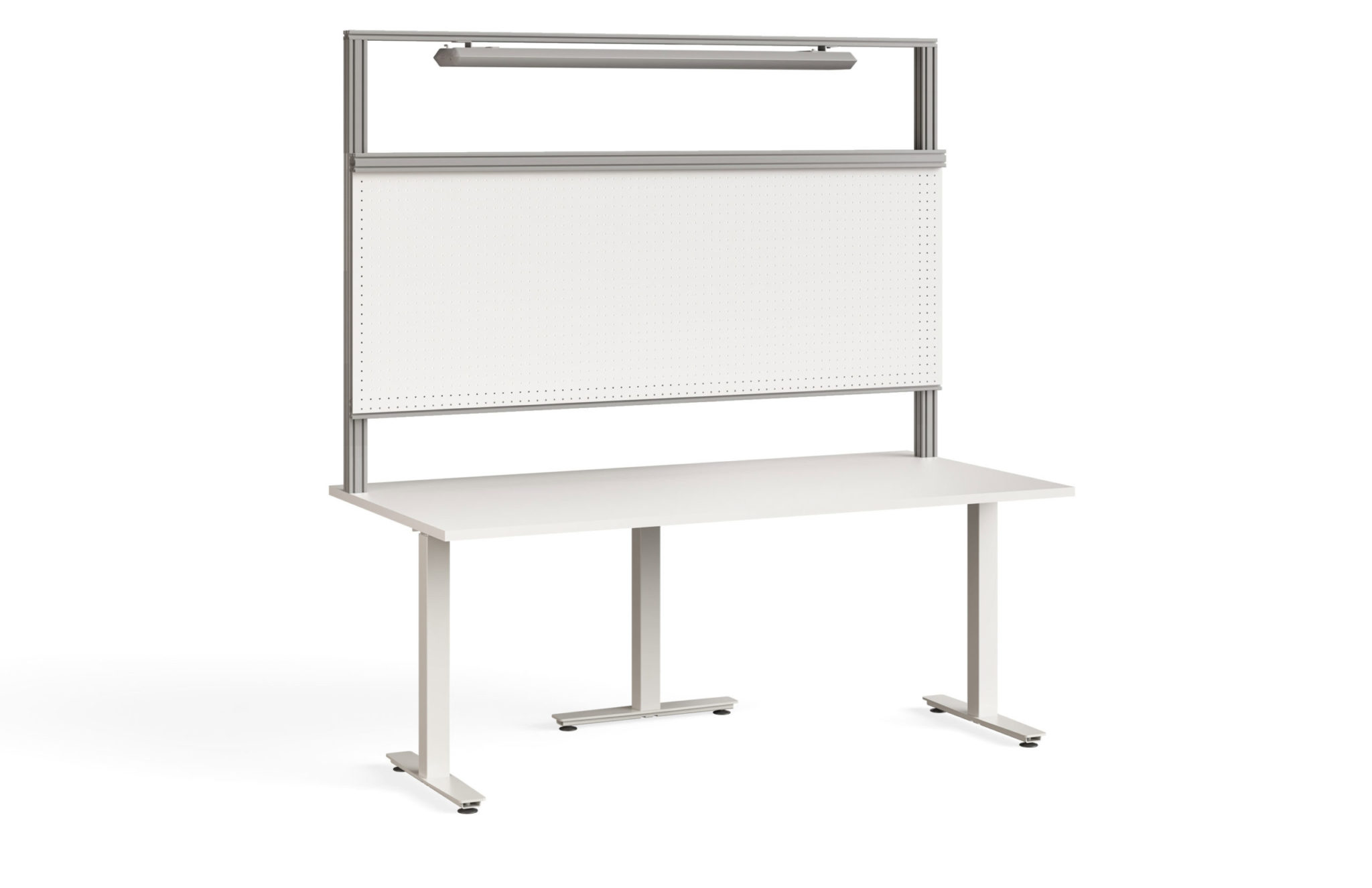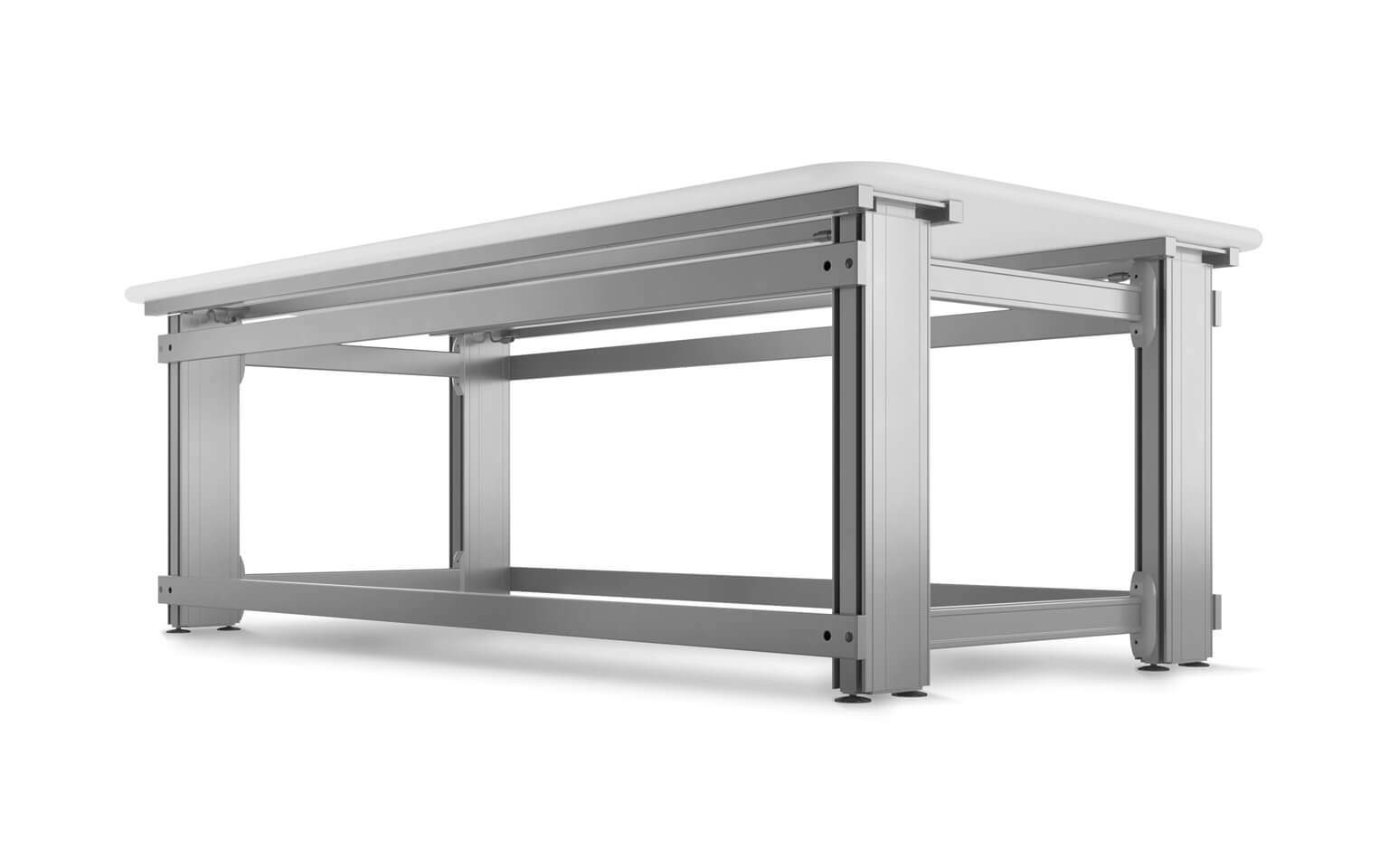Height adjustable workstations have become an essential feature in lab design, enhancing lab work with much-needed flexibility. The ability to adjust the height of lab equipment and workstations ensures that laboratory staff can perform their duties comfortably and efficiently. The benefits of height adjustability in laboratory settings range from increased productivity to improved safety and health outcomes.
Benefits of Height Adjustable Workstations in a Lab

Improve Ergonomics
Laboratory staff often spend long hours standing or sitting in the same position, which can lead to a range of musculoskeletal disorders. Height-adjustable equipment and workstations allow staff to adjust the height of the equipment or work surface to a comfortable and healthy position, reducing the risk of injury and discomfort. For example, a lab technician can adjust the height of a microscope or a centrifuge to suit their height and reduce strain on their back, neck, and shoulders.
Enhance Productivity
When staff are comfortable and not experiencing discomfort or pain, they can work more efficiently and effectively. The ability to adjust equipment and workstations to suit individual needs also means that tasks can be completed more quickly and accurately, as staff can work in a position that is comfortable for them.
Promote Collaboration and Teamwork
When lab equipment and workstations are height adjustable, they can be easily shared among different members of the laboratory staff. This allows staff to collaborate more easily, share resources, and work together to achieve common goals. For example, if a lab technician needs to work on a microscope that is set up for a colleague, they can easily adjust the height of the microscope to suit their needs.
Improve Safety
Laboratory equipment can be heavy and cumbersome, and improper handling can lead to accidents and injuries. Height adjustability can help to reduce the risk of injury by allowing staff to adjust the height of equipment and workstations to a safe and comfortable level. For example, a staff member can adjust the height of a fume hood to ensure that they can work safely and comfortably while handling hazardous materials.
Promote Inclusivity and Accessibility
In a diverse workforce, staff members may have different heights, abilities, and needs. Height-adjustable equipment and workstations ensure that all staff members can access and use equipment and workstations safely and comfortably, regardless of their height or physical abilities. This helps to promote inclusivity and equal opportunities for all staff members.

Enhance Health
Sitting or standing in the same position for extended periods can lead to a range of health problems, including back pain, obesity, and cardiovascular disease. Height-adjustable equipment and workstations allow staff to alternate between sitting and standing positions, which can help to reduce the risk of these health problems. Standing for short periods of time can also help to increase energy levels and reduce fatigue.
Save Money
The initial cost of height-adjustable equipment and workstations may be higher than traditional equipment. However, the long-term benefits can lead to cost savings over time in several ways:
- improved productivity
- reduced injury rates
- improved health outcomes
In addition, organizations that prioritize the health and well-being of their staff are likely to have higher staff retention rates and attract top talent, leading to a more productive and efficient workforce.

How to Bring Height Adjustable Furnishings to Your Lab
Implementing height adjustability in laboratory settings is relatively straightforward. Many laboratory equipment suppliers offer height-adjustable options for their products, and there are also specialized manufacturers who provide height-adjustable workstations and furniture specifically designed for laboratory settings. Organizations can also retrofit existing equipment and workstations with height-adjustable features, such as adjustable legs or motorized lifts.
There are a few factors that organizations should consider when implementing height adjustability in laboratory settings.
- Ensure that staff members are properly trained in how to adjust equipment and workstations to suit their needs. Organizations should also provide guidance on ergonomic best practices, such as taking regular breaks and alternating between sitting and standing positions.
- Consider the design and layout of the laboratory. When planning a laboratory, organizations should consider how height-adjustable equipment and workstations can be incorporated into the design. This may involve adjusting the height of countertops, shelves, and cabinets, or ensuring that there is enough space to accommodate height-adjustable furniture and equipment.
- Consider the maintenance and repair requirements of height-adjustable equipment and workstations. Regular maintenance and servicing can help to ensure that equipment operates safely and effectively, reducing the risk of injury and equipment failure. Organizations should also have processes in place to quickly repair or replace equipment that is not functioning correctly.
Height adjustability provides numerous benefits in a lab, including improved ergonomics, productivity, safety, inclusivity, and health outcomes. By prioritizing the health and well-being of laboratory staff through the implementation of height-adjustable equipment and workstations, organizations can create a more productive and efficient workforce, reduce the risk of injury, and attract top talent. While there may be initial costs associated with implementing height adjustability, the long-term benefits are likely to outweigh these costs, leading to cost savings and improved outcomes for laboratory staff and organizations as a whole.







